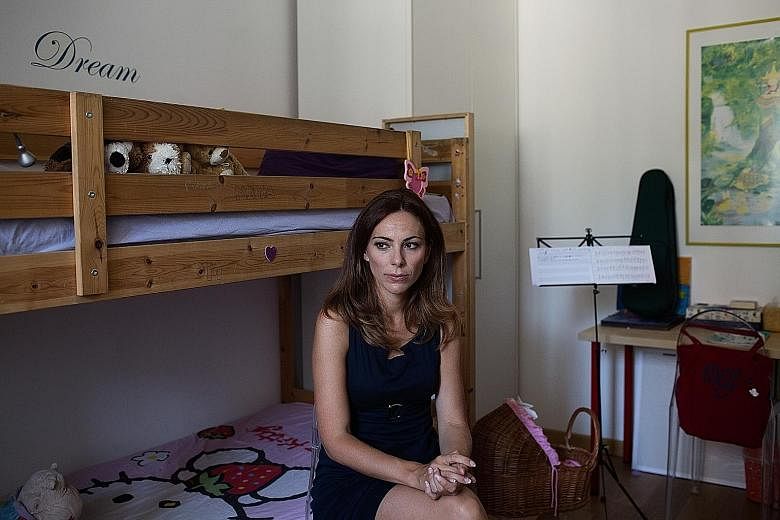ROME • One advertisement pictured a woman holding an hourglass next to the words: "Beauty has no age limit. Fertility does."
Another portrayed a pair of baby shoes wrapped in a ribbon of the Italian flag. Yet another showed a man holding a half-burnt cigarette. "Don't let your sperm go up in smoke," it read.
They were part of a government effort to promote "Fertility Day" on Sept 22, a campaign intended to encourage Italians to have more babies. Instead, the ads set off a furore, were denounced as offensive and within days were withdrawn.
What they did succeed in doing, however, was to ignite a deeper and lasting debate about why it is that Italy has one of the lowest birth rates in the world, and what can be done about it.
The problem is not a lack of desire to have children, critics of the campaign say, but rather the lack of meaningful support from the government and many employers in a country where the family remains the primary source of childcare.
"I should be a model for their campaign, and I still feel very offended," said Ms Vittoria Iacovella, 37, a journalist and mother of two girls aged 10 and eight. "The government encourages us to have babies and then the main welfare system in Italy is still the grandparents."
Many working women, without an extended family to care for a child, face a dilemma as private childcare is expensive. Some also worry that their job security may be undermined by missing workdays because of childcare issues. Many companies do not offer flexible hours for working mothers.
Not surprisingly, Italy's long slowdown in childbirth has coincided with its recent economic slump. But Italian families have been shrinking for decades.
Last year, 488,000 babies were born in Italy, the fewest since the country first unified in 1861. It has one of the lowest birth rates in Europe, with 1.37 children per woman, compared with a European average of 1.6, according to Eurostat figures.
By contrast, in France, the economy has been flat too, but a family-oriented system provides a far more generous social safety net that includes day care and subsidies for families to have children. There, women have two children each on average.
"On paper, Italian women have equal rights," said Ms Tiziana Bartolini, editor of Noi Donne, one of Italy's most prominent feminist magazines. "But reality tells us a different story. Women are expected to care for children. If they live in regions where services are good, or in small towns, they keep their job. If they live in big, chaotic cities and have no family nearby, they are very prudent about becoming pregnant. Or they stop working."
The Ministry of Health began the fertility campaign on Aug 31 with online advertisements and a hashtag on Twitter. The goal was to publicise a series of public meetings on Fertility Day and encourage Italians to have more children.
Yeah, sure, thought Ms Maria Scioli, 41, a teacher who depends on her family to care for her 15-month-old boy, when she saw the debate on her Facebook page.
"I'd love to have a second child," Ms Scioli said, "but my job situation worries me. And I even feel lucky. I think about all those women my age or younger that couldn't have babies and had to watch that offensive ad."
Even Prime Minister Matteo Renzi, whose own health minister started the campaign, distanced himself from the ads in a radio interview, noting ironically that none of his friends "had their kids after seeing an advert".
Mr Renzi said that to increase the birth rate, structural issues such as day care and services needed to be addressed.
Under him, Italy's government has tried to help families with a so-called baby bonus of €80 to €160 (S$123 to S$246) for low- and middle-income households, and has approved labour laws giving more flexibility on parental leave.
But Italy allocates only 1 per cent of its gross domestic product to social protection benefits - half the European average. One child out of three in Italy is at risk of relative poverty.
"Italy has a terrible combination: low birth rate, low women's employment and high risk of child poverty," said Professor Alessandro Rosina, a professor of demography at Università Cattolica del Sacro Cuore in Milan.
"On this path, Italy can only but have increasing costs for ageing people, and increased public debt. We defend our present, but can't design the future."
NYTimes

